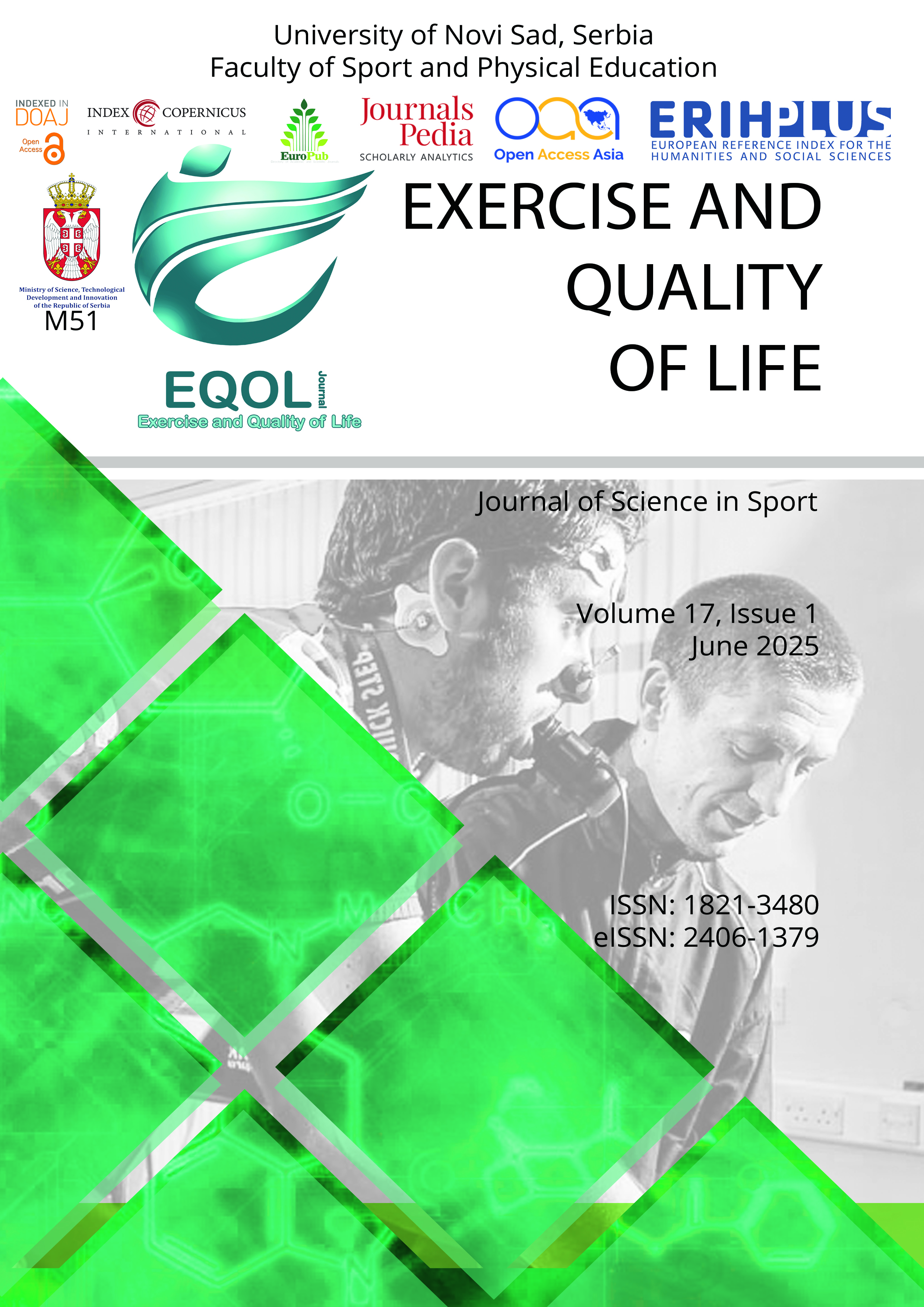Current issue

Volume 17, Issue 1, 2025
Online ISSN: 2406-1379
ISSN: 1821-3480
Volume 17 , Issue 1, (2025)
Published: 15.06.2025.
Open Access
All issues
Contents
02.12.2011.
Original scientific paper
BODY MASS INDEX AND BODY FAT CONTENT IN ELITE ATHLETES
The aim of this study was to evaluate body fat content (BF) of elite athletes obtained by two different field methods for body composition measurements and to compare it with body mass index (BMI) values. The research was conducted on 40 male athletes (20 runners and 20 handball players) and 30 non athletes. BF was calculated from the skinfold values (BFsft) and estimated using a hand-held impedance analyzer (BFbia%). Body mass index, waist to hip ratio (WHR) and waist to stature ratio (WSR) were calculated from adequate anthropometric values. Comparing the BF content between non athletes and two different sport groups, significant difference was found in all parameters between runners and non athletes (p < 0.05). Significant difference was found between BF values of runners and handball players (p < 0.05). Runners have had significantly lower BF, estimated by both methods. They also have had significantly lower WHR and WSR (p < 0.05). In the group of athletes and non athletes with BMI higher than 25 kg/m 2 , or lower than 20 kg/m 2 , comparing with others, no significant difference was found in BFsft and WHR. BMI is not a good predictor of BF, because it does not provide specific information about body fatness, but rather body heaviness. Bioimpedance and anthropometry methods could be used to monitor non obese subjects in clinical routine and population based studies. For BF estimation in athletes, we recommend anthropometry, rather than bioimpedance because of inter individual and inter sports variations in arms length and regional masculinity.
Jelena Popadić Gaćeša, Otto Barak, Dae Karaba Jakovljevic, Aleksandar Klašnja, Vladimir Galiċ, Miodrag Drapšin, Damir Lukač, Nikola Grujić























